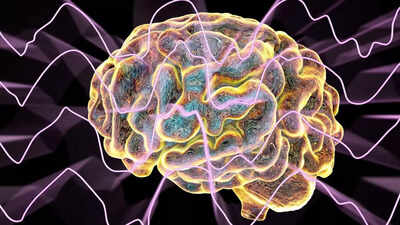ARTICLE AD BOX

“The more powerful your legs, the better your brain.” That’s how Dhru Purohit opened his conversation with Louisa Nicola, a neurophysiologist based in New York City. It may sound like an oversimplification, but research shows there’s more truth in that statement than most of us realize.
How is it all connected?
Nicola pointed to one of the most fascinating studies on the subject, an investigation that tracked 300 female twins, all around the age of 55. The scientists wanted to know if muscle fitness, measured through leg power, could predict cognitive changes over a 10-year period.

This twin design was clever: by comparing twins, researchers could isolate the effects of leg power from genetics and early-life environment. Results were compelling—higher leg power at baseline significantly predicted better cognitive outcomes a decade later, even when adjusting for heart health, diabetes, smoking, diet, socioeconomic status, and other known dementia risk factors.But that is not all. A small subset of the twin pairs underwent MRI scans approximately 12 years into the study. These images revealed that participants with greater leg power at baseline also had larger total gray matter volume and healthier brain structures, such as smaller ventricles, years later.

Lead researcher Dr Claire Steves explained in 2015: "When it came to cognitive ageing, leg strength was the strongest factor that had an impact in our study.
Other factors such as heart health were also important, but the link with leg strength remained even after we accounted for these. We think leg strength is a marker of the kind of physical activity that is good for your brain."
What experts believe?
Nicola explained it in clear terms: “If we cut it down, it means that the bigger the leg muscle, the bigger the brain.”Further, the broader scientific community has echoed these findings. Dr. Doug Brown of the Alzheimer’s Society said the results add to growing evidence that physical activity benefits the brain as much as the body, though more research is still needed to fully understand the relationship.
Dr. Simon Ridley of Alzheimer’s Research UK also emphasized that both strength training and aerobic activity should be part of a balanced lifestyle to reduce dementia risk.

So what does this mean in practical terms? Building strong legs isn’t just about aesthetics or mobility; it could be a protective factor for your brain.Nicola suggests that simple but powerful exercises like squats and deadlifts can be the key to building leg strength. These compound movements engage multiple muscle groups, improve balance, boost circulation, and challenge your nervous system, all of which contribute to healthier aging.



.png)
.png)
.png)
















 7 hours ago
3
7 hours ago
3









 English (US) ·
English (US) ·